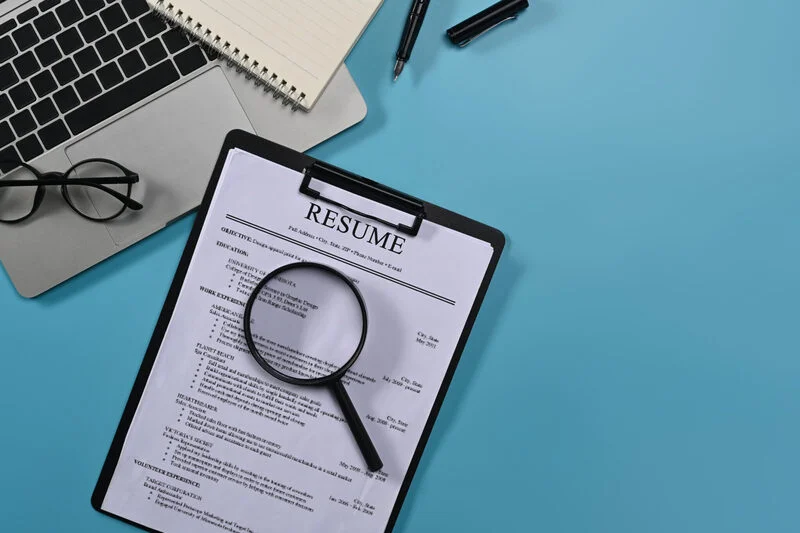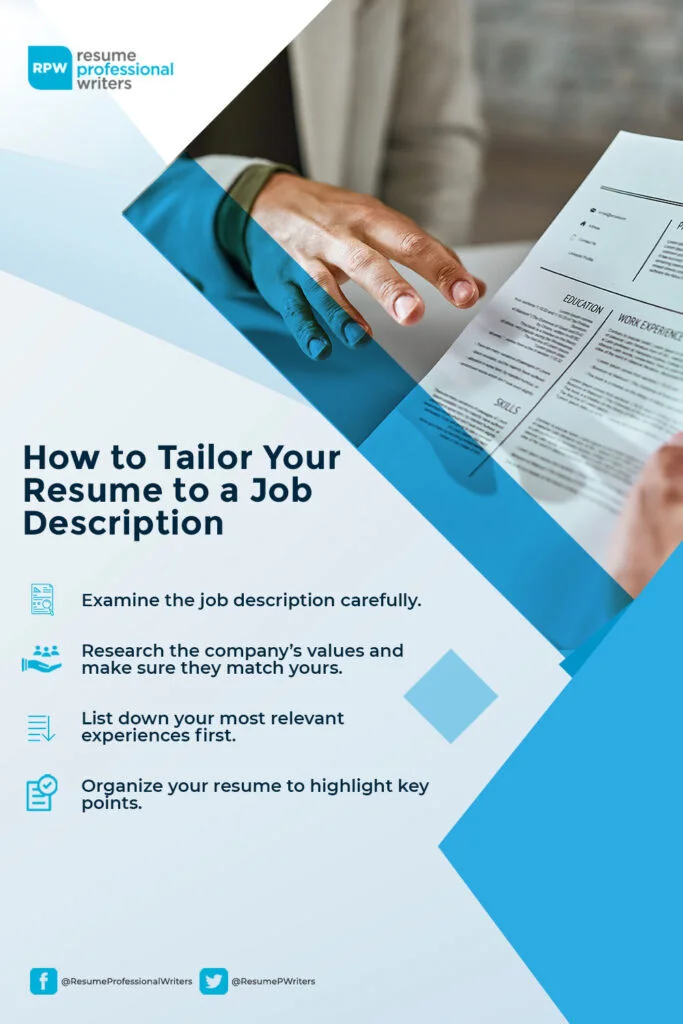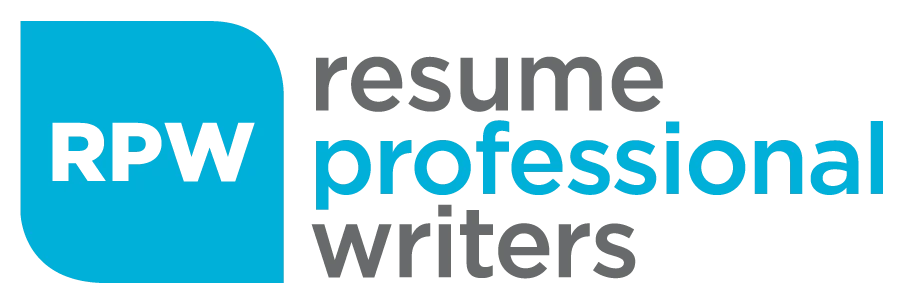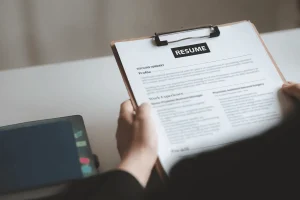One of the most stressful parts of the job application process is writing your resume. Of course, you want your resume to stand out to make an impression on hiring managers, and this stage includes the comparing your resume vs job description details from the post you’re aiming for.
With that in mind, is your resume aptly tailored to your target job position? In this blog, we’ll discuss how to ensure your resume job description lines up with the requirements of the job. By doing so, you can get a head start closer to your dream role.
What is a Resume?
A resume is a formal document created by a job applicant to list their qualifications for a job post. It typically comes with a tailored cover letter wherein the applicant states their interest in a certain job or organization and draws the readers’ attention to the most relevant information on the resume.
What is a Resume Job Description?
The resume job description is one of the most important elements of your resume. It shows hiring managers that you’re a perfect fit for the position. This is the part where you highlight past employment experiences (paid, internship, and volunteer), as well as other significant skills and relevant professional achievements and accomplishments.
A well-written resume job description emphasizes that your abilities and accomplishments are not only relevant to the job at hand; they are also exactly what the organization needs.

What Do Hiring Managers Look for in a Resume?
Experience, Skills, Education, and Achievements
Hiring managers look for key qualifications for the position they are filling. They search for these keywords across your resume’s experience and skills section. It’s tempting to mention every skill and experience you’ve gained, but employers want to hear about only those directly related to the position at hand. Thus, emphasize only the accomplishments that are most relevant to the position for which you’re applying.
Career Progression
Hiring managers want to see that you’ve advanced professionally over the course of your career. They want to know that you want to improve your skill set and expertise. They do this by looking at your past job titles and the dates you held them.
When you send your resume to a prospective employer, you definitely expect a response. Include your phone number, email address, and address in your resume. You might also have an online portfolio of your previous works, or a professional networking profile such as LinkedIn. Include them on your resume. Double-check the information you’re going to include so they can contact you.
No Inconsistencies
Make sure your resume is presented in reverse chronological order as much as possible. Check to ensure there are no unexplained gaps in your job history or contradictions in the tasks or achievements you’ve listed. It’s also important to note that you have to be truthful. Misrepresenting yourself may get you an interview, but chances are you will be found lying during the interview
Contact Details
Resume Keywords
Your resume should include all relevant resume keywords that fit your skill set. The widely used application tracking system (ATS) is based on simple algorithms that monitor prospective applicants by matching relevant phrases or keywords. It’s also the most typical method used by recruiters to sort through thousands of applications received in response to a job post.
Format and Layout
Your resume’s layout should be clear and consistent. Use the same font throughout. When compared to paragraphs, bullet points are a better option. Avoid using distracting colors and bad fonts. No hiring manager wants to download software just to look over a resume, so be sure that your resume is formatted in a way that the recipient can simply open it.
Drawbacks of a Generic Resume
There are no two companies or positions that are exactly alike. Thus, by generalizing your resume, you risk missing some or all of the competencies they want.
If your resume does not match the job description or company culture, you will be at a disadvantage from the start. Being too unclear about projects you’ve worked on or achievements you’ve made can make your resume appear full of clutter. At the same time, highlighting unnecessary job skills can make it appear as if you didn’t read the job description at all—or didn’t care what the company was looking for.
Writing a generic resume is similar to opening an ordinary can of soup, as each can has the same quantity of liquid. They each contain the same amount and grade of ingredients. A generic resume can be basic, unnoticeable, and even boring at times. It’s ineffective when an employer wants someone who is distinctive, qualified, and a perfect fit on paper.

Resume vs Job Description: Benefits of Tailoring Your Resume
While it may appear to be a lot of extra work to develop a new resume for each application, tweaking your resume can have huge advantages in helping you land your preferred job.
You can show how you match the applicant profile.
Within each description, a specific skill set is outlined for the applicant that the organization is looking to hire. By basing on them for your resume job descriptions, you can highlight where you have acquired or developed these talents.
You can express your interest in a specific job opportunity.
By personalizing your resume, you communicate your attention to detail as well as your enthusiasm for the opportunity by showing how you are the greatest fit.
It shows your understanding of what the employer requires.
Employers want to hire people who can help them reach their goals. When you mention relevant skills and qualifications, you showcase your ability to make an immediate impact.
It boosts your chances of getting past the ATS.
Employers use software to search your resume for keyword matches. By using these words on your resume, you increase your chances of passing the ATS.
This can make a wonderful first impression on potential employers and set you apart from other candidates who send boilerplate resumes. By tailoring your resume to the specific job you are applying for, you can highlight your relevant skills and experiences. This, in turn, increases your chances of being contacted for an interview.
How to Tailor Your Resume to a Job Description
Here are some tips on how you can tailor your resume to the job posting.
1. Examine the job description carefully.
Before you write your resume, make sure you understand fully the job post. Words that are unique to the job description should be added to your resume. Also, make a note of any special education or training that you may want to include on your resume. Finally, check the order of skills and job criteria, as these may represent the objectives of the company.
2. Research the company’s values and make sure they match yours.
Another good way to distinguish yourself from the competition is to show to employers that your values fit with theirs. This is going to prove to that you have a strong sense of character, which is a quick and easy way of leaving a favorable impression.
3. List down your most relevant experiences first.
Use your skills and knowledge to speak to those items and keywords. Take a moment to refine the bullet points for your previous roles, using the keywords you highlighted in step one, with those prioritized placed first, even if these were not your main roles. This shows the hiring manager that you have the qualifications for the job and that you thoroughly reviewed the job description.
4. Organize your resume to highlight key points.
This is where the job description’s priority order can come in handy. Display the most important information at the top third of your resume to capture the recruiters’ attention quickly. Each resume section should begin with the most important piece of information you have. Rearrange your bullet points such that the most significant ones come first.
Before you submit your resume, reread it for grammar and spelling issues. A well-organized and impressive resume might provide you an advantage over other job seekers. It is the most important job search tool you will have in your job search. However, some resume mistakes are serious and must be avoided because they can undo all of your hard work in a matter of seconds.

Download this How to Tailor Your Resume to a Job Description infographic.
Craft a Standout Resume for the Position You Want
Tailoring your resume and cover letter for each position may take a significant amount of time. But if you’re serious about getting that interview and landing that dream job, creating a customized resume will make all the difference.
Don’t worry if you don’t have the time to write an excellent resume. At Resume Professional Writers, we are composed of a team of professional resume writers and career coaches committed to helping job applicants secure job interviews. Chat with one of our career consultants today and let us help you create the ideal resume for your job. Let’s get started!









